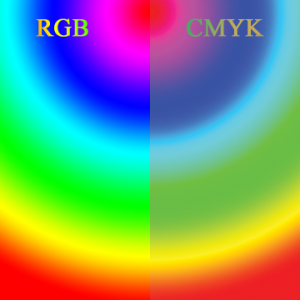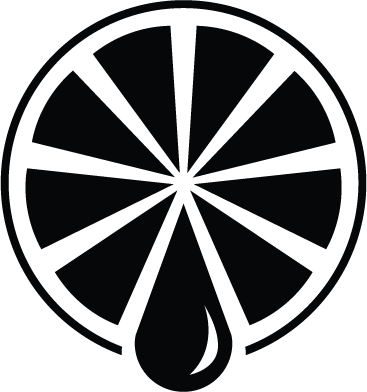Setting up a file for Full-Bleed Printing
Glossary
All files that have a bleed need all colors and images that bleed off the page to extend at least 1/8″ past where the intended edge should be. Let’s say you have a 3×5 card that has a bleed on all four sides. A file with the bleed extended will actually be at least 3.25×5.25 to include an extra 1/8 of an inch on all four sides. Not only that, but the background picture should be at least 3.25×5.25 with the intention that it will be trimmed down to 3×5.
A print job that has and printing extending to any edge of the final product has a bleed. It’s the difference between a full photograph from a developer or the white edges of a Polaroid. Most printing equipment can’t print all the way to the edge of a sheet of paper, so achieving a bleed on a print means printing a larger sheet of paper and then trimming down to the “intended edge”. For example, an 8.5×11 print with a bleed needs to be printed on a 9×12 sheet of paper and trimmed down to 8.5×11. Check out our page on Full-Bleed printing to learn more.
Setting Files Up for Printing
 It all comes down to the difference between an additive and subtractive color spectrum. Another way to think about it is light vs physical color. If you were to shine three lights colored red, green, and blue respectively on the same spot, the resulting light would appear white. However, if you were to put red, green, and blue paint in the same spot, it would come out black. Your computer monitor uses the additive, light-based color spectrum while printing always uses the subtractive, pigment based color spectrum. Unfortunately, print isn’t capable of getting the same bright colors that monitors can. However, using press-quality Pantones can get brighter colors that traditional CMYK digital printers can not. But these colors come at a considerable cost due to using a much more expensive technology.
It all comes down to the difference between an additive and subtractive color spectrum. Another way to think about it is light vs physical color. If you were to shine three lights colored red, green, and blue respectively on the same spot, the resulting light would appear white. However, if you were to put red, green, and blue paint in the same spot, it would come out black. Your computer monitor uses the additive, light-based color spectrum while printing always uses the subtractive, pigment based color spectrum. Unfortunately, print isn’t capable of getting the same bright colors that monitors can. However, using press-quality Pantones can get brighter colors that traditional CMYK digital printers can not. But these colors come at a considerable cost due to using a much more expensive technology.
Yes, but chances are we’re just going to use the PDF files included in the package. Please contact us if there’s a situation that requires us to print from a packaged adobe file.
Wanting to submit a Word document, Powerpoint, Photoshop, InDesign file or something similar? Unfortunately, these files depend on the computer opening them to have all of the dependent fonts and (in some cases) images installed on the computer itself. PDF is one of the only “closed” file types that doesn’t depend on anything else being installed on the computer for it to open, view, and (most importantly) print correctly. This doesn’t mean PDFs never have printing issues, but 90% of any issues are cleared up by just saving your file as a PDF.
